Are TSP Distributions Taxable?
Do you contribute to the thrift savings plan (TSP)? It’s one of the most powerful retirement savings vehicles you have available. You receive an automatic 1% agency contribution in the plan, regardless of whether or not you contribute. You can also receive matching contributions on up to the first 5% of your compensation that you contribute.1
However, it’s not just matching contributions that make the TSP such an effective savings tool. Your TSP savings also benefit from tax-deferral. You don’t pay annual taxes on growth as long as the funds stay in the TSP. That allows your savings to compound at a faster rate than they might in a comparable taxable account.
While tax-deferral is helpful, it isn’t the same as tax-free. In most cases, you have to pay taxes on your savings at some point. By understanding the taxability of your TSP balance, you can more effectively plan for retirement. Below are the four types of income you could take from your TSP and how they’re taxed in retirement:
Traditional Contributions
Most TSP contributions are what is known as traditional, or pre-tax, contributions. For example, your contributions are likely deducted from your paycheck on a pre-tax basis. Matching contributions aren’t taxed at the time they’re made. These pre-tax contributions go into your TSP and grow on a tax-deferred basis.
However, they don’t go untaxed forever. When you withdraw those funds in retirement, they’re taxed as ordinary income. This is also true if you roll your contributions to an IRA after you separate from government employment. Withdrawals from a traditional IRA are also taxed as income.
Roth Contributions
It’s possible that you may have the opportunity to make Roth contributions to your IRA. Roth contributions are made with post-tax dollars. The contributions are made after taxes are withheld from your paycheck.
Once in the TSP, the Roth contributions grow tax-deferred, just like traditional contributions. However, the difference, in this case, is that distributions are not taxed. Since you paid taxes on the dollars upfront, you don’t pay taxes on the distributions.
Tax-Exempt Contributions
You may have some tax-exempt contributions from work performed in combat zones. These dollars go into the TSP pre-tax. They grow on a tax-deferred basis just like other contributions. However, when you withdraw these dollars, you only pay taxes on the growth, not the original contribution. The contribution dollars are tax-exempt forever.
Annuity
You also have the option of converting your TSP balance into an annuity when you retire. The benefit of this option is that your income is guaranteed* for life. There’s no risk of outliving your assets.
If you choose the annuity option, a portion of your payment will likely be taxable. The taxable portion is based on the mix of traditional and Roth contributions in your TSP. Your annuity provider will calculate an estimate of your payment and the taxable portion so you can plan accordingly.
Ready to plan your retirement income strategy? Let’s talk about it. Contact us today at Benefit Resource Partners. We can help you analyze your needs and develop a plan. Let’s connect soon and start the conversation.
*Guarantees, including optional benefits, are backed by the claims-paying ability of the issuer, and may contain limitations, including surrender charges, which may affect policy values.
Licensed Insurance Professional. This information is designed to provide a general overview with regard to the subject matter covered and is not state specific. The authors, publisher and host are not providing legal, accounting or specific advice for your situation. By providing your information, you give consent to be contacted about the possible sale of an insurance or annuity product. This information has been provided by a Licensed Insurance Professional and does not necessarily represent the views of the presenting insurance professional. The statements and opinions expressed are those of the author and are subject to change at any time. All information is believed to be from reliable sources; however, presenting insurance professional makes no representation as to its completeness or accuracy. This material has been prepared for informational and educational purposes only. It is not intended to provide, and should not be relied upon for, accounting, legal, tax or investment advice. This information has been provided by a Licensed Insurance Professional and is not sponsored or endorsed by the Social Security Administration or any government agency. 19447 – 2019/10/30


